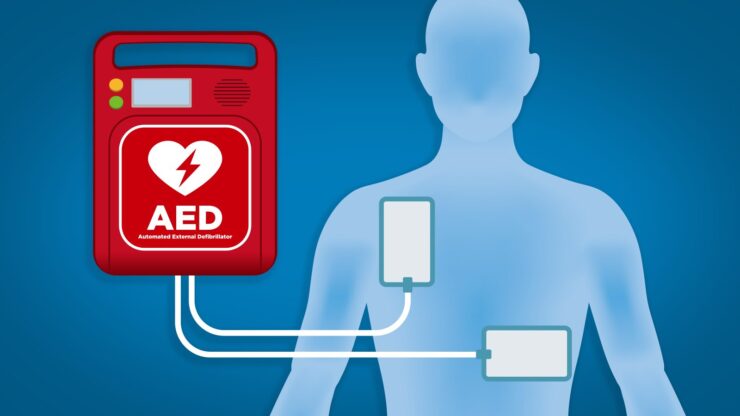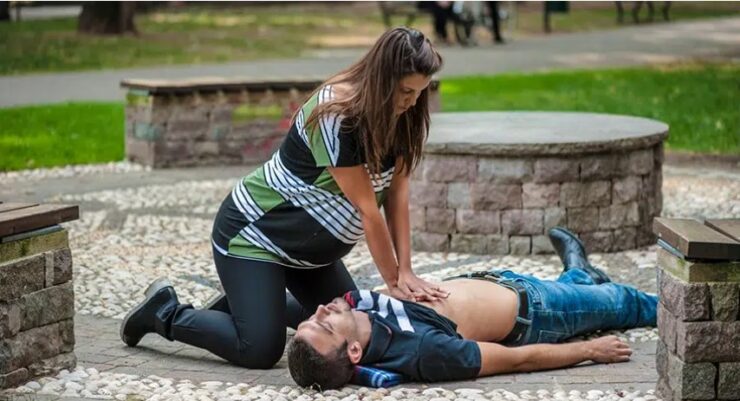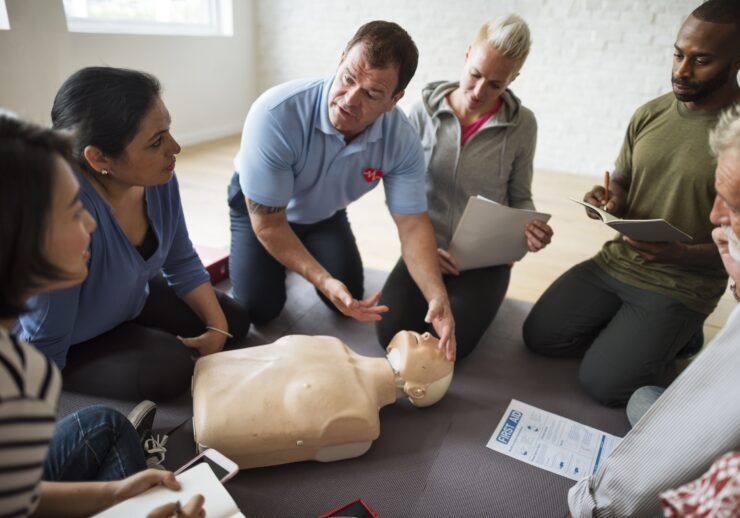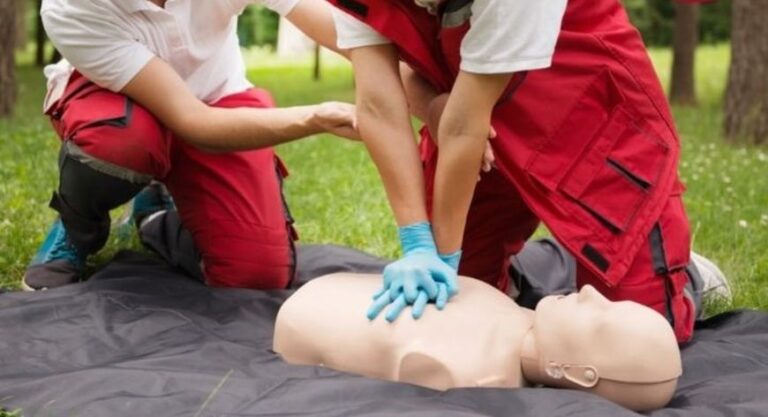Embarking on a journey to achieve mastery in lifesaving techniques involving CPR (Cardiopulmonary Resuscitation), AED (Automated External Defibrillators), and First Aid is a remarkable path to empowerment and service to humanity. With an array of emergencies that can occur in everyday life, the knowledge and skills acquired from this journey equip one to respond with confidence and precision. This blog post navigates the comprehensive landscape of these vital abilities, focusing on the importance of understanding, proper execution, and ethical considerations, making it accessible to a varied audience.
Basic Anatomy and Physiology for First Responders

The human body is a complex system, and first responders must grasp its fundamental structure and function. Knowledge of basic anatomy and physiology enables accurate assessment of a patient’s condition and guides in delivering essential medical assistance. For example, understanding how the circulatory system operates aids in controlling bleeding and performing CPR. An informative place to learn all about it is available here: https://cprcertificationnow.com/.
Equally crucial is an awareness of the respiratory system and its relation to life support. By knowing how oxygen travels from the lungs into the bloodstream and is distributed to vital organs, a first responder can effectively manage situations where a person’s breathing or heartbeat has ceased. This foundational knowledge sets the stage for more advanced lifesaving techniques.
Step-by-Step Guide to Performing CPR
CPR remains a pivotal intervention during cardiac emergencies. The essential steps begin with checking for responsiveness, calling emergency services, and initiating compressions. Positioning hands correctly on the chest, compressing to an appropriate depth, and maintaining a steady rhythm is vital in effective resuscitation.
The process continues with rescue breaths, given at regular intervals between compressions. This aspect requires both precision and care, as improper technique can hinder rather than help. Balancing the need for urgency with the requirement for accuracy is the key to successful CPR, making practice and understanding equally essential for mastery.
Proper Use of Automated External Defibrillators (AEDs)

AEDs have become indispensable tools in emergency response. By recognizing and treating specific abnormal heart rhythms, they can save lives when used correctly. Awareness of when to deploy an AED, as well as how to attach the electrodes and follow the device’s instructions, forms the first part of this vital skill set.
Furthermore, care must be taken to ensure that the area is clear of water, metallic objects, or other potential conductors of electricity. Handling an AED with caution, combining its use with CPR, and communicating clearly with others at the scene contributes to an effective resuscitation effort, enhancing the chances of survival.
Assessing and Responding to Common Medical Emergencies
Every day, common medical emergencies such as fainting, seizures, or allergic reactions occur. Recognizing the symptoms, and having a well-structured response, are integral to minimizing harm and maximizing recovery. Identifying the signs of a stroke or heart attack, for instance, can hasten treatment and significantly affect the outcome.
One must also be prepared to adapt to the unexpected. Having a comprehensive understanding of various conditions, together with an adaptable mindset, ensures readiness for diverse medical emergencies. A composed and systematic approach often makes the difference between life and death, reinforcing the significance of thorough training and practice.
Choking: Techniques for Adults, Children, and Infants

Choking is a terrifying experience for both the victim and those witnessing the event. Quick, effective intervention is necessary. For adults, techniques like the Heimlich maneuver can dislodge an obstruction. Knowledge of the procedure and confidence in its execution is vital.
Different approaches are needed for children and infants, however. Specific techniques adapted to their smaller size and more delicate structure are essential. This underlines the importance of specialized training and awareness, not only of the methods themselves but also of the nuances that make them effective across different age groups.
Bleeding Control and Wound Care
Controlling bleeding and caring for wounds are primary skills in emergency response. Quick action can save lives, especially in severe cases like arterial bleeding. Applying pressure, using tourniquets where appropriate, and dressing wounds are critical actions that must be performed promptly and with expertise.
Care after initial control is equally vital, as improper wound management can lead to infections and complications. A first responder’s responsibilities extend to cleaning, dressing, and monitoring wounds, along with reassuring and comforting the patient. Such comprehensive care highlights the multifaceted nature of first aid and emergency response.
Dealing with Fractures, Sprains, and Strains

Accidents and injuries often result in fractures, sprains, or strains. Knowledge of how to recognize and manage these is essential for comfort and recovery. Immobilizing a fracture correctly can prevent further injury, while applying ice and compression to a sprain or strain can reduce swelling and pain.
These interventions demand both skill and empathy. Comforting a patient, explaining what is happening, and providing appropriate care all combine to create a positive impact on recovery. Training and practice ensure that these physical skills are matched by the emotional support necessary for a complete and compassionate response.
Recognizing and Managing Cardiac Arrest

Cardiac arrest is a critical condition requiring immediate intervention. Recognizing its signs and responding with rapid CPR and AED deployment is the first part of a life-saving sequence. A clear understanding of how the heart functions, along with the ability to coordinate with other responders, is crucial to successful resuscitation.
Moreover, the ability to adapt to evolving situations and to provide ongoing care after initial revival is vital. The post-arrest phase is fraught with potential complications, and the skills to manage them can make a substantial difference in outcomes. The complex nature of cardiac arrest underscores the importance of comprehensive training in this area.
Summary
Embarking on the path to mastery in CPR, AED, and First Aid is both a demanding and rewarding journey. It equips individuals with the knowledge, skills, and confidence to respond to a broad spectrum of emergencies, turning ordinary citizens into potential lifesavers. The detailed exploration provided above serves as a guide and inspiration, emphasizing the multifaceted nature of emergency response, and the deep human connection it embodies. Whether you’re a novice starting your journey or a seasoned professional, continuous learning, practice, and empathy will keep you prepared and compassionate when the call to help arrives.

